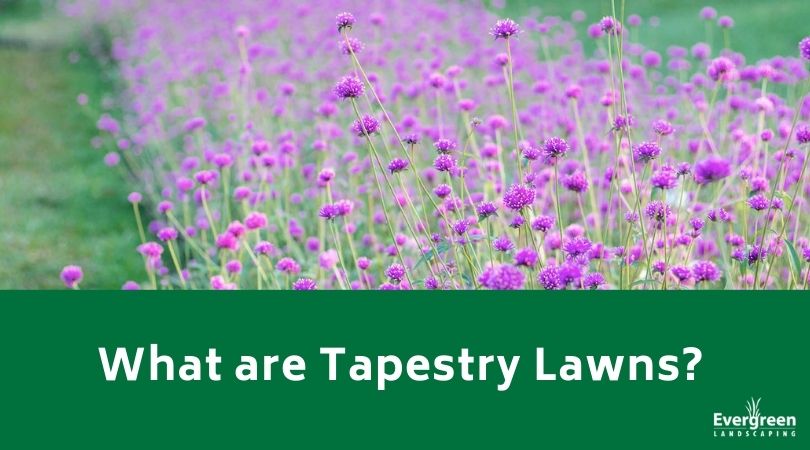
A tapestry lawn is a relatively new landscaping idea that involves moving away from traditional turf. You replace grass with low-growing perennial flowering plants. The goal is to create an interlaced mat that has different layers, textures, and shades that you can safely walk on. They give pollinators a greater choice of food sources from spring to early fall, and tapestry lawns require less maintenance than a traditional lawn. We’ll go over how to create one below.
- Site Preparation
You should consider the fact that most tapestry lawns won’t tolerate heavy foot traffic, so they’re not a good choice for kid or pet play areas. Clear out any existing weeds and grass by digging them out to stop them from competing with the new plants. You can also do sheet mulching by layering cardboard and newspaper with compost to boost the nutrients for the plants, and it takes six months.
- Use Quality Soil
You want to prime the land to support your new tapestry lawn, so good soil is the foundation. You should lay down a minimum of eight inches of soil that is free-draining and course. It can also be slightly sandy to help improve the drainage. Depending on what you want to plant, you’ll need to add topsoil, grade the dirt, or use compost or organic matter in this step.
- Pick the Plants
Your plant selection is critical to the success of your tapestry lawn, so you want to focus on plants with lower water requirements. Use climate-adapted or native, non-invasive plants, and take time to arrange them in groups of similar light and water requirements. This helps everything thrive while ensuring nothing takes over the space. Some plants that grow beautifully in large areas in the United States are Dutch white clover, creeping thyme, or Sedum. For shaded areas, Irish moss or baby tears are all nice choices.
- Consider Your Colors
Low-grow Carex should serve as the backbone of your design, and it’s similar to how greens and hedges for the garden’s base. Once you lay these out, concentrate on which colors you want to see. If you want purple, you could use low Ajuga or a Liriope. Whichever plants you pick, they should all be resistant to deer and low or no-mow variety. You want to avoid meadow plants since some can be more aggressive.
- Install Drip Irrigation
One of the biggest reasons people switch from traditional grass lawns is to help conserve water. A drip irrigation system is usually the best system in have for tapestry lawns. You should plan out when you want to place the plants and install your drip irrigation system. You should put your plants in the ground after you finish trenching the irrigation system.
- Set up a Maintenance Plan
It can take up to a year for your tapestry lawn to establish itself. During this first year, you’ll want to set up a plan to fertilize, water, and weed the area so your seeds can grow. Once they germinate, you’ll have less maintenance. You should only need to mow three to four times a year at the height of 3.5 to 4 inches with sharp blades to keep the yard looking neat.
Contact Evergreen Landscaping
If you’d like to know more about tapestry lawns, contact us. We’re happy to walk you through the process and help you decide if this turf option is right for you.
